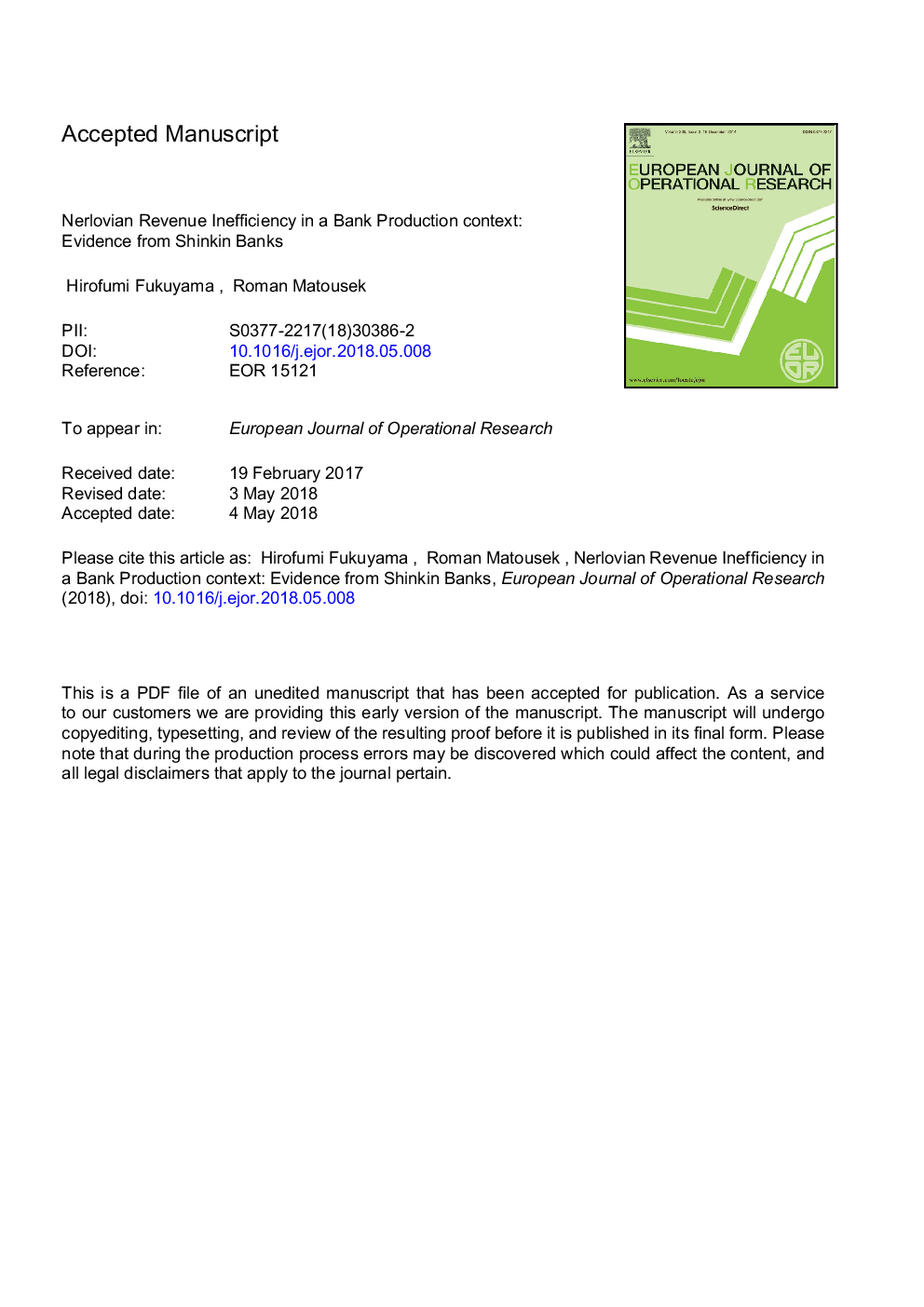| Article ID | Journal | Published Year | Pages | File Type |
|---|---|---|---|---|
| 6894510 | European Journal of Operational Research | 2018 | 40 Pages |
Abstract
The paper further advances the contemporary methodological and empirical research on bank efficiency. We introduce a bank two-stage network revenue decomposition analysis based on the slack-based directional inefficiency measurement framework, by building upon the approaches of Epure and Lafuente (2015), Fukuyama and Weber (2009, 2010), Fukuyama and Matousek (2017) and Färe, Fukuyama, Grosskopf and Zelenyuk (2015, 2016). We apply the model on the segment of Japanese financial institutions - Shinkin banks. We examine the efficiency performance of Shinkin banks during the period from March 2007 to March 2015. This covers the recent years after the turmoil in the US subprime residential mortgage market which started early 2007. The applied innovative framework is particularly suitable for this type of banks since the financing of their business activities is mainly dependent on the different types of deposits that the proposed model takes into consideration.
Related Topics
Physical Sciences and Engineering
Computer Science
Computer Science (General)
Authors
Hirofumi Fukuyama, Roman Matousek,
